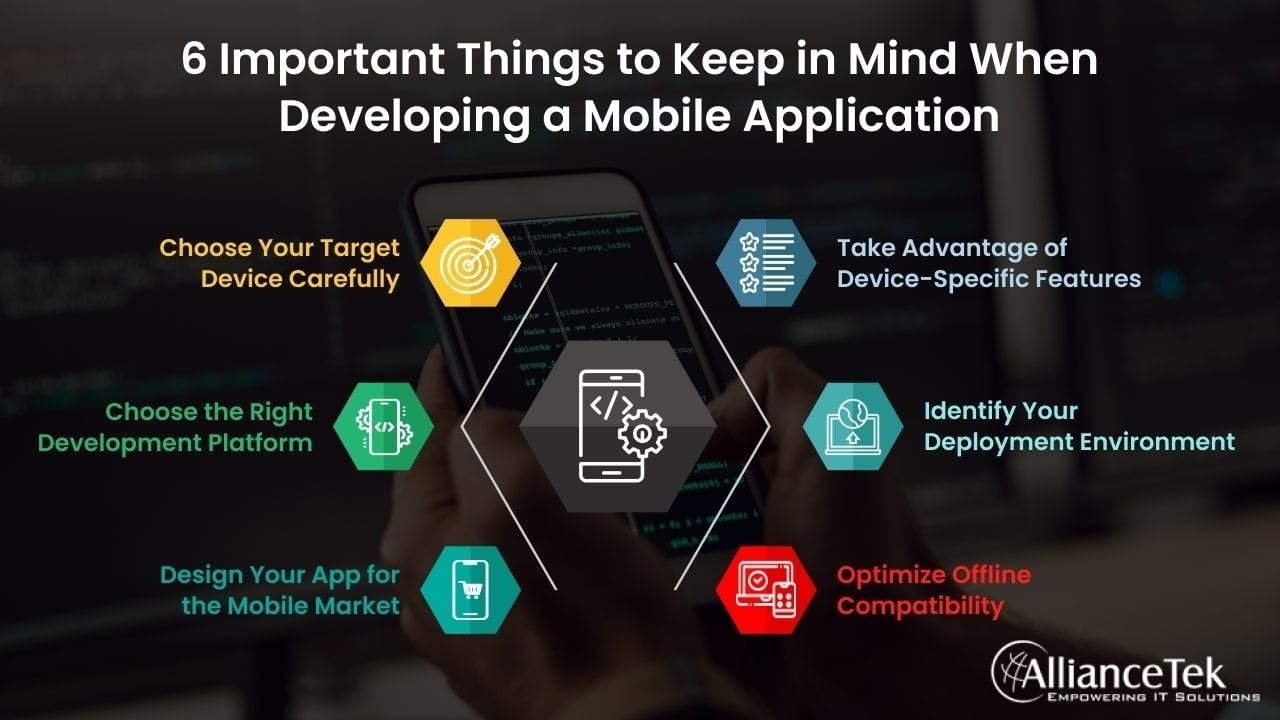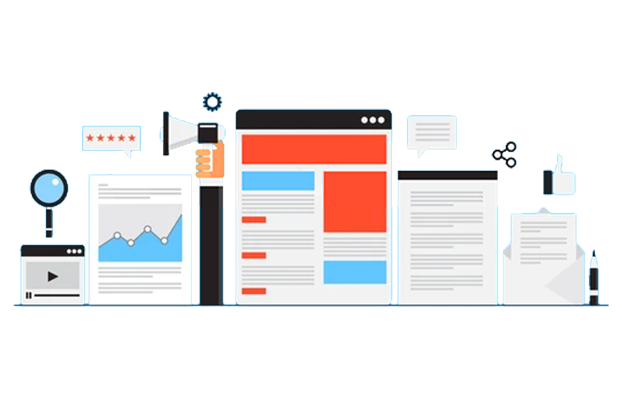Mobile applications have revolutionized the way we work and live our daily lives. The proliferation of mobile devices, including smartphones and tablets, has changed the way we access information, communicate with others, and engage in entertainment. As a result, mobile app development has become an increasingly lucrative industry, with over 218 billion app downloads in 2020 alone.
However, with millions of apps available across various platforms, the competition for attention and downloads is fierce. Aspiring mobile developers must keep certain considerations in mind to ensure their apps stand out in the saturated market. In this article, we will explore the six important things developers should keep in mind when developing a mobile application.

Here are the Things to Keep in Mind When Developing a Mobile Application
1. Choose Your Target Device Carefully
Choosing the right target device is a critical consideration when considering mobile application development. With various mobile device platforms available, each with its unique audience and expectations, developers must choose a device that aligns with the target audience of their application. Here are some key things to keep in mind when selecting a target device:
# Consider the Audience Demographics
Age, income, education, and location can all impact the type of mobile device a person uses. For example, younger generations tend to use iOS devices, while Android is more popular among older age groups.
# Identify the Market Share of the Device
The market share of the device can impact the number of potential users for your application. According to a Statista report, as of 2021, Android has a global market share of 72.91%, while iOS has a market share of 26.92%.
# Analyze user behaviour
Understanding how users interact with their devices can help developers design an app that meets their needs. For example, iOS users tend to spend more money on in-app purchases than Android users.
2. Choose the Right Development Platform
Once you have chosen your target device, the next consideration is what development platform to use. There are various options available, each with its pros and cons. Developers must choose the right development platform for their project based on the following factors:
# Cross-platform Development
Cross-platform development tools like Mono, PhoneGap, or Titanium allow developers to develop for multiple devices simultaneously, saving time and effort. However, they offer less control over device-specific features.
# Native App Development
Developing native apps provides complete control over the user interface and features of the device, but increases development time. Native apps are built using platform-specific languages, such as Swift for iOS or Java for Android, which means that each app is designed for the specific device it is running on.
3. Design Your App for the Mobile Market
Designing an app for the mobile market requires a different approach than designing for the web or desktop. Mobile applications should be designed with the user in mind, avoiding overloading screens with too much text or menu items, and utilizing mobile-specific features to enhance the user experience. Here are some things to keep in mind when designing a mobile app:
# Keep the user Interface Simple
Mobile devices have limited screen space, and users expect a simple and intuitive interface. Avoid overloading screens with too much information or menu items, and use clear and concise language.
# Utilize Mobile-Specific Features
Mobile devices offer unique features, such as touch-scrolling, buttons, and orientation, that can enhance the user experience. Use animations and orientation features to transition the user between screens smoothly, and take advantage of zooming if the user uses the appropriate gestures.
# Use Appropriate Design Patterns
Different mobile devices have different design patterns that users expect to see. For example, iOS users expect to see tabs at the bottom of the screen, while Android users expect to see tabs at the top. Developers must ensure that their app adheres to the design patterns of the target device to ensure a seamless user experience.
4. Take Advantage of Device-Specific Features
One of the advantages of developing a mobile app is the ability to take advantage of device-specific features. By incorporating these features into your app, you can offer a more robust and unique experience for users. Here are some device-specific features to consider:
# GPS
The Global Positioning System (GPS) can be used to provide location-based services, such as maps, directions, and local search results.
# Camera
The camera on a mobile device can be used to provide visual search results, augmented reality experiences, or document scanning.
# Accelerometer
The accelerometer measures the acceleration of the device and can be used for games, fitness apps, and augmented reality experiences.
5. Identify Your Deployment Environment
Another important consideration when developing mobile applications is identifying the deployment environment. Apps can be developed for general use or for internal use within a company. Developers must consider how the application will fit into the existing environment to ensure a smooth transition. Here are some things to keep in mind:
# Deployment method
The deployment method will vary based on the target device and audience. Apps can be distributed through the app store, via a website, or through an enterprise deployment method.
# Security
Apps developed for internal use must adhere to company security policies to ensure the safety of sensitive information.
# Integration
The app must integrate seamlessly with the existing infrastructure to ensure a smooth transition.
6. Optimize Offline Compatibility
Connectivity interruptions can erase sent data, leading to a negative user experience. To avoid this, app designers should utilize data storage so data can be stored on the application indefinitely until connectivity is restored, and the data can be sent to the end user. Here are some ways to optimize offline compatibility:
# Use local storage
Storing data locally on the device can ensure that data is not lost in the event of a connectivity interruption.
# Sync Data Automatically
Automatically syncing data with the server when connectivity is restored can ensure that data is up-to-date and that no data is lost.
Conclusion
Developing a mobile application requires careful consideration of various factors, from choosing the right target device and development platform to designing for the mobile market and taking advantage of device-specific features. With over 4.2 billion mobile device users worldwide, mobile app development offers a lucrative opportunity for businesses and aspiring developers alike. By keeping these six important considerations in mind, developers can create successful and valuable applications that meet the needs and expectations of their target audience.
Call us at 484-892-5713 or Contact Us today to know more details about the Things to Keep in Mind When Developing a Mobile Application.


